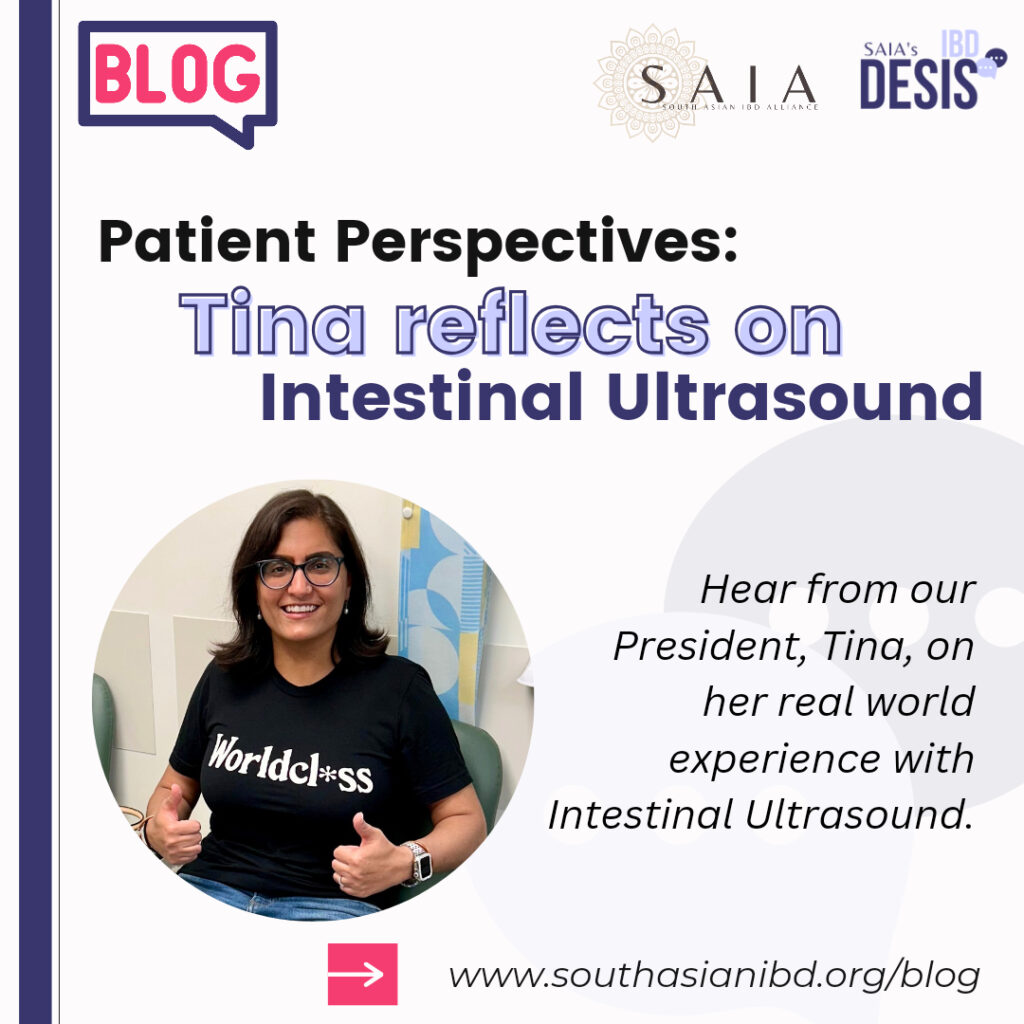
In today’s blog post, SAIA’s President, Tina, shares her experience with the new imaging modality for IBD called intestinal ultrasound (IUS):
“Last week, I had my first intestinal ultrasound. I had been very nervous the last month getting ready to go in for IUS as I’ve been having weird gut symptoms the last few months. My ileoscopy has been scheduled for 3 months out, so my doctor and I decided it might be best to have an IUS done in the meantime.
What is IUS you ask? It is a modality that can visualize bowel inflammation, thickening, and fistula tracts in addition to taking a look at severity and extent of inflammation. It doesn’t require bowel prep or gross contrast (!!), it’s not invasive, results can be discussed in real time, and it can even view small bowel concerns in Crohn’s patients like myself with ostomies and no colon and no rectum!
What did we learn? My doctor and I are cautiously optimistic that my Crohn’s disease is generally okay. We do have to check the stoma site during ileoscopy as that was not captured. And I do need to follow up and make sure my IBS and gastroparesis are doing okay given the ongoing gut symptoms. During my IUS, my midline abdominal hernia did pop up on imaging quite glaringly. So, I will need an abdominal/pelvic MRI later this year to make sure the hernia isn’t growing. I really can’t handle another abdominal surgery, so I hope for my own sake, the hernia is stable!

Bottom line: My experience was that IUS can be a good tool for intermittent disease monitoring especially because my blood tests don’t show much by way of inflammation. And I feel a bit relieved knowing there are techniques to monitor disease without having to wait several months for a scope and/or MRI!
Some things to note: IUS is not, however, a replacement for colonoscopies and biopsies, which are still the gold standard for defining severity and extent of IBD in patients like us. IUS also does not replace the role of CT or MR enterographies particularly in Crohn’s disease where fistulae and other bowel particularities may need to be analyzed more extensively. But it does provide a good overall picture of disease activity and is more cost-effective than scopes and other imaging.
- From an American perspective, we still need to figure out how payors will reimburse hospitals and physicians for IUS.
- From a global health equity perspective, IUS, once more readily available, may be easier for patients to access in developing areas where IBD is burgeoning and other forms of imaging are not as affordable.
Lots of buzz and excitement here for IUS and I can’t wait to see how this modality develops further in the IBD space. So, own your Crohn’s, own your ulcerative colitis, and talk to your physicians about when intestinal ultrasound may be available in your region!”
